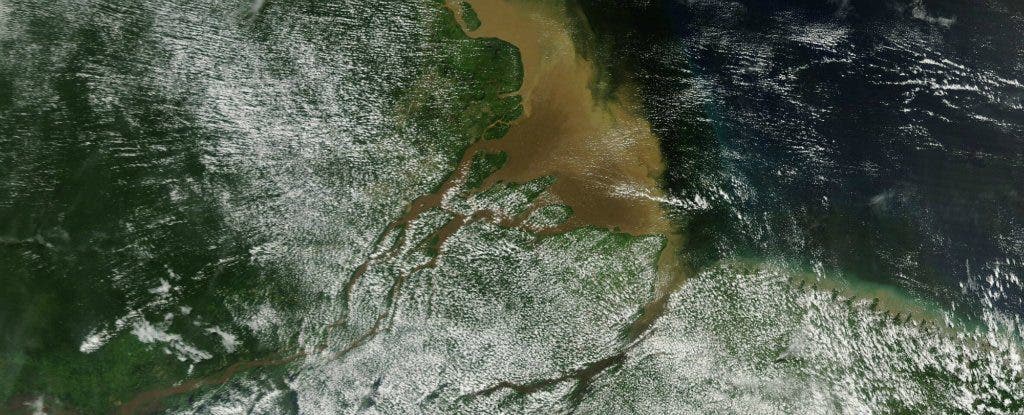It’s a true “Wow!” moment that took the scientific world by surprise: in an article soon to be published in Science, a team of researchers describes a 1,000 km long coral reef in the murky waters of the Amazon.

No matter how well we think we know our planet, there are always surprises – and a big one at that. The Amazon is the Earth’s crown river. The largest by water discharge, the second by length, its basin covers approximately 7,050,000 square kilometres (2,720,000 sq mi), and accounts for roughly one-fifth of the world’s total river flow. Now, we have another jewel to add to that crown, as Patricia Yager, a professor of oceanography and climate change at the University of Georgia, writes in a new paper.
The study didn’t happen overnight, it was 30 years in the making. Yager wasn’t even looking for corals at first, she was using the RV Atlantis to investigate how the Amazonian plume affects the ocean’s absorption of carbon dioxide. When she was approached by a Brazilian researcher, Rodrigo Moura, to study corals – she didn’t even take it seriously at first.
“I kind of chuckled when [Brazilian oceanographer Rodrigo Moura] first approached me about looking for reefs. I mean, it’s kind of dark, it’s muddy – it’s the Amazon River,” one of the researchers involved, Patricia Yager, told Robinson Meyer over at The Atlantic.
“But he pulls out this paper from 1977, saying these researchers had managed to catch a few fish that would indicate reefs are there. He said, ‘Let’s see if we can find these.'”
The paper in question went largely unnoticed. It described species of reef fishes and sponges being dredged up from the mouth of the Amazon, species tightly related to coral reefs like you’d find in the Caribbean Sea. It caused a bit of a local stir, but then most of the scientific community simply regarded it as a quirk – or completely forgot about it.
After some debate and careful planning – as mentioned, the original purpose of the expedition was different – they pulled a dredger to see what species they could find in the area. To everyone’s surprise, they pulled out sponges, stars, and fish: coral species.
“I was flabbergasted, as were the rest of the 30 oceanographers,” Yager told The Atlantic.
This was amazing in itself. A coral reef lying on the bottom of the Amazon is completely revolutionary for our understanding of reefs. This was so surprising because the gunk in the Amazonian plume often sheltered it from the sun. Most corals live in symbiotic relationships with algae that inhabit their pores, and they need light for photosynthesis. They found significant differences between different areas of the Amazon, with the northern areas less covered being more colorful, more “reef-like”. Meanwhile the southern parts feature more staghorns and other colorful corals, “much more what you might imagine a coral reef would look like,” Patricia Yager adds.
Right now, there isn’t much information about this reef. The paper hasn’t been published yet and pretty much the only source of information is the report from The Atlantic – but if a finding of this magnitude has been made, then it would be huge. It would be interesting to see if the extent of the reef can be mapped through remote sensing, or if the dirty plume is simply too large and would render such an approach ineffective.



